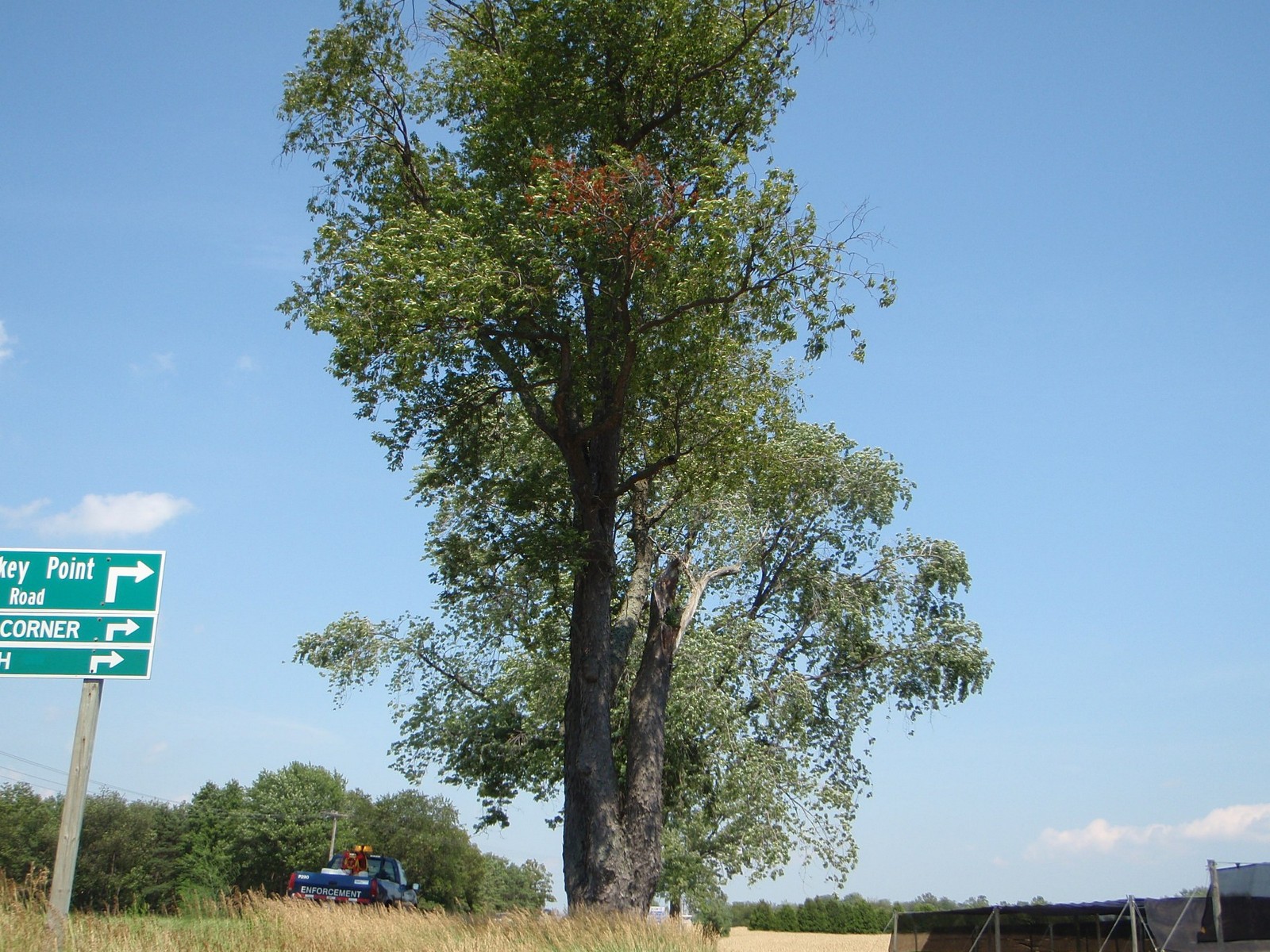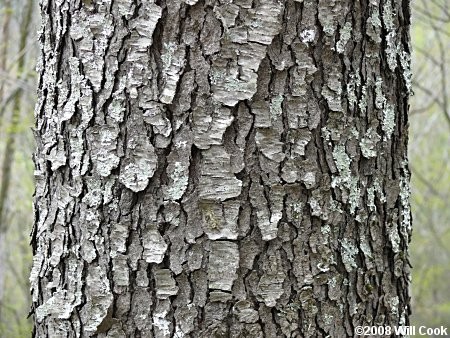Prunus serotina
Owner: Norfolk County – Road Allowance
Nominator: Norfolk Environmental Stewardship Team (NEST)
Height: 28.6 m (98.3 ft)
Diameter: 142.36 cm (56 in)
Circumference: 447 cm (176 in)
Description
Black Cherry is the largest of the native cherries and can be found throughout the eastern United States, southern Ontario, parts of southern Quebec, as well as New Brunswick and Nova Scotia. This tree develops well on all soils, except the wettest and the driest, and as a result can be found in most forest stand types. Between the ages of 30 and 100, black cherry reaches the period of maximum seed production with good seed crops occurring in intervals of 1 to 5 years. The fruit it produces is an important food source for a variety of wildlife including many birds, squirrels, deer, and turkeys. The leaves, twigs, and bark of black cherry contain cyanide, therefore not a good choice for a stick to roast campfire marshmallows on! Older trees can be readily identified by their characteristic bark which is dark gray and divided into squarish scales that curl upwards, said to resemble burnt cornflakes. Its hard reddish-brown wood is easily worked and is favoured for making fine furniture and interior trim.
Marquis, David A. (1990, December). Silvics of North America, Volume 2: Hardwoods. United States Department of Agriculture, Forest Service. Retrieved date (2010, December 14th) from http://www.na.fs.fed.us/spfo/pubs/silvics_manual/table_of_contents.htm
Black Cherry bark (Source: Duke University)


